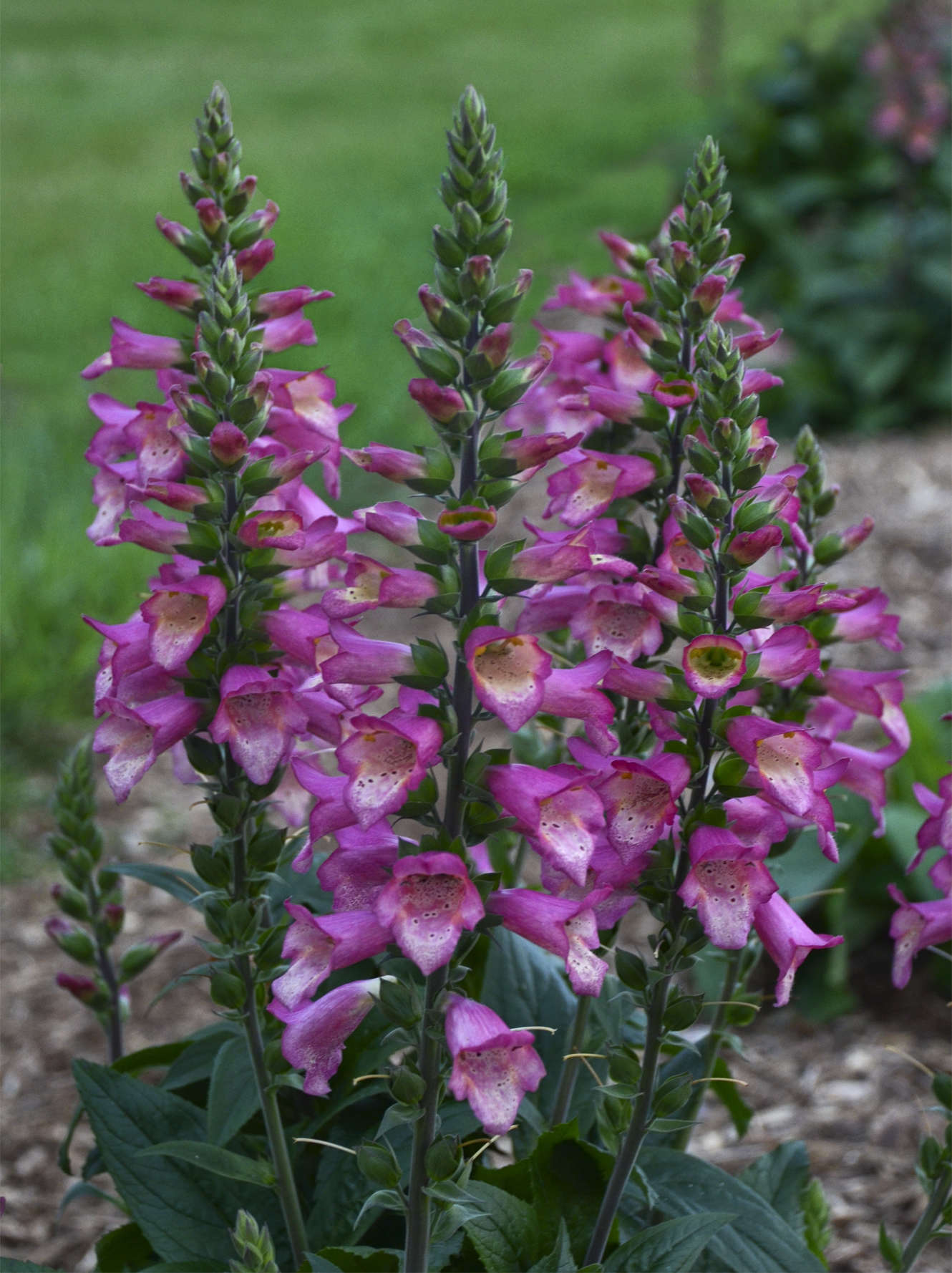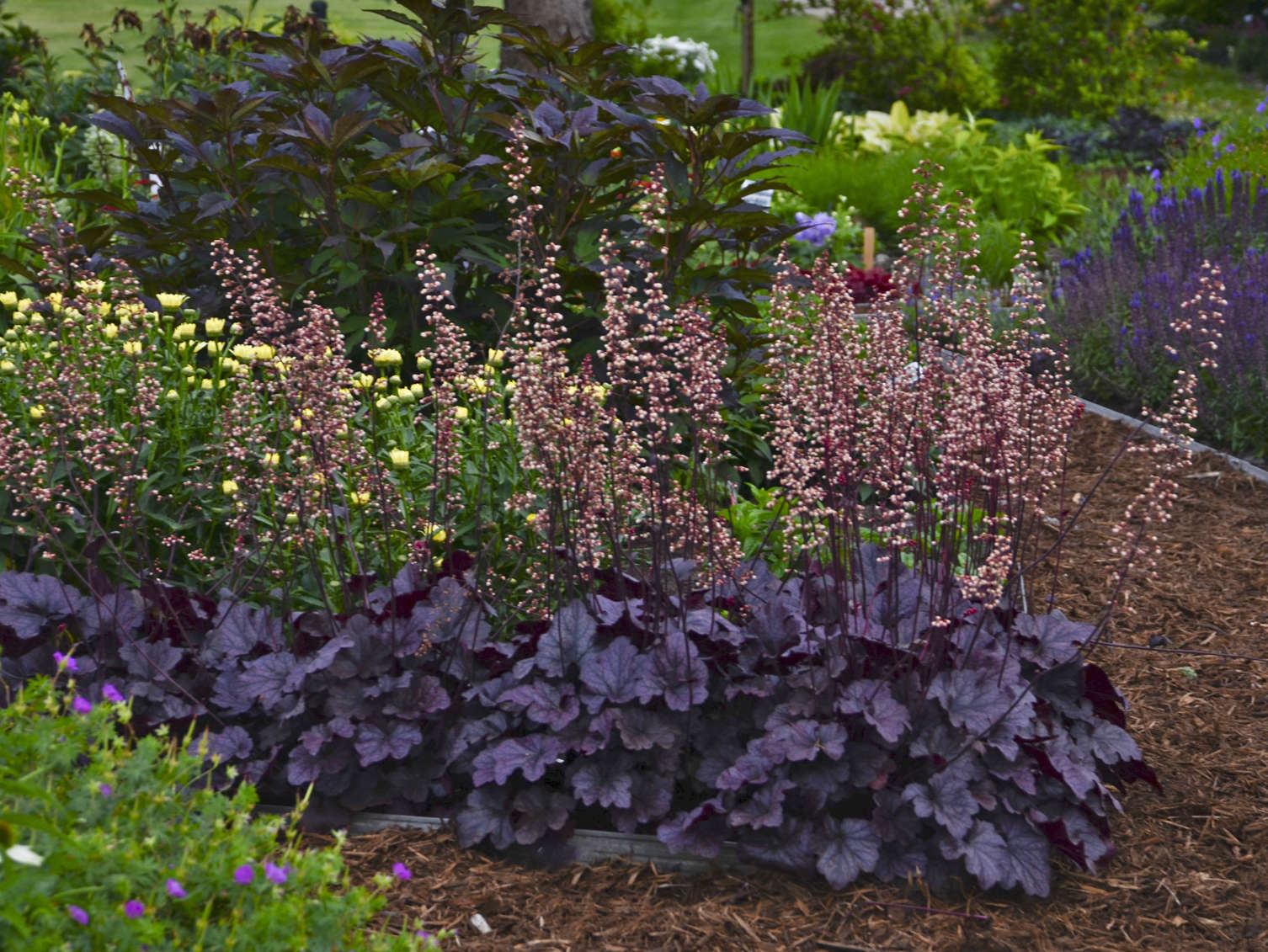Growing Digiplexis® Successfully
02/10/2014
The exotic looking intergeneric foxglove hybrid DIGIPLEXIS® was invented by crossing a hardy Digitalis purpurea with a tropical orange flowered Digitalis relative native to the Canary Islands called Isoplexis canariensis. The new DIGIPLEXIS® hybrids quickly gained notoriety when they were introduced in 2013 by Cultivaris, receiving several awards the first year. Additional cultivars such as ‘Berry Canary’ which offers a more compact size are now becoming available through additional sources.
Planting in Fall for Early Spring Sales
Potting and Timing
Start by receiving freshly grown 72ct plugs in early fall (mid-September). Plant one plug per 8-inch or 2-Gal container in a well-drained planting media with a pH of 5.5-6.0. These plants develop a large, bulky crown, so it is best not to pot them up into smaller containers. Pinch them once two weeks after transplant to promote lateral branching. Plants should be rooted within 6 weeks of potting.
Fertility
DIGIPLEXIS®are moderate feeders. Feed them 100-125ppm Nitrogen in a constant liquid feed during the rooting stage and then increase the rate to 150-200ppm Nitrogen in a constant liquid feed when forcing them into bloom.
Moisture
DIGIPLEXIS® grows best with moderate to consistent moisture levels. If conditions are too dry, mites can become a problem. Be sure to irrigate in the morning to allow the dense, rugose foliage to dry by evening.
Lighting
Growing plants under high light conditions and cool temperatures will keep them neatly compact, making them easier to ship and merchandise. Growing under clear plastic is recommended for best light quality.
Temperature
Once plants are rooted in after fall potting, they will need to be vernalized in a heated greenhouse at 38-45°F for a minimum of 6 weeks to ensure heavy flowering in spring. This is a tender plant—do not let greenhouse temperatures fall below 38°F!
Pests and Diseases
A few pests such as aphids and spider mites can occasionally affect a crop of DIGIPLEXIS®. Scout regularly for these pests and treat as needed.
Forcing
When you are ready to force your crop of DIGIPLEXIS® into bloom, be sure the pots are spaced very well, keeping in mind that the foliage will extend beyond the edge of the pot. Warm the greenhouse up to 50-60°F and expect flower initiation within 6-8 weeks. No supplemental lighting is necessary when plants are grown under clear plastic.
Planting in Spring for Mid to Late Spring Sales
Potting and Timing
Start by receiving vernalized 72ct plugs in spring (January through April). Plant one plug per 8-inch or 2-Gal container in a well-drained planting media with a pH of 5.5-6.0. These plants develop a large, bulky crown, so it is best not to pot them up into smaller containers. Plants should finish in 8-10 weeks.
Fertility
DIGIPLEXIS®are moderate feeders. Feed them 100-125ppm Nitrogen in a constant liquid feed during the rooting stage and then increase the rate to 150-200ppm Nitrogen in a constant liquid feed when forcing them into bloom.
Moisture
DIGIPLEXIS® grows best with moderate to consistent moisture levels. If conditions are too dry, mites can become a problem. Be sure to irrigate in the morning to allow the dense, rugose foliage to dry by evening.
Lighting
Growing plants under high light conditions and cool temperatures will keep them neatly compact, making them easier to ship and merchandise. Growing under clear plastic or outdoors in frost-free climates is recommended for best light quality.
Temperature
In frost-free climates, DIGIPLEXIS® can be grown outdoors in early spring at 45-60°F. If growing indoors, greenhouse temperatures should be maintained at 50-60°F. This is a tender plant—do not let temperatures fall below 38°F during production! You can expect flower initiation to occur within 6-8 weeks after plants are rooted out.
Pests and Diseases
A few pests such as aphids and spider mites can occasionally affect a crop of DIGIPLEXIS®. Scout regularly for these pests and treat as needed.


